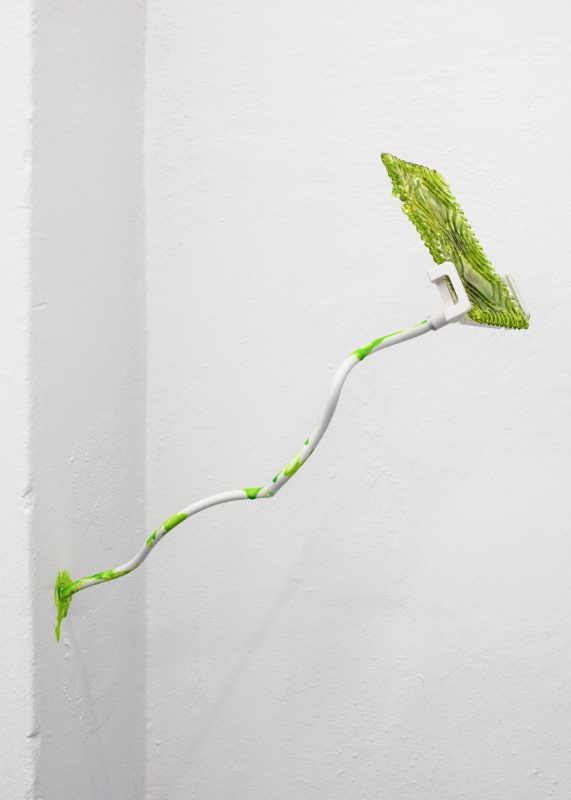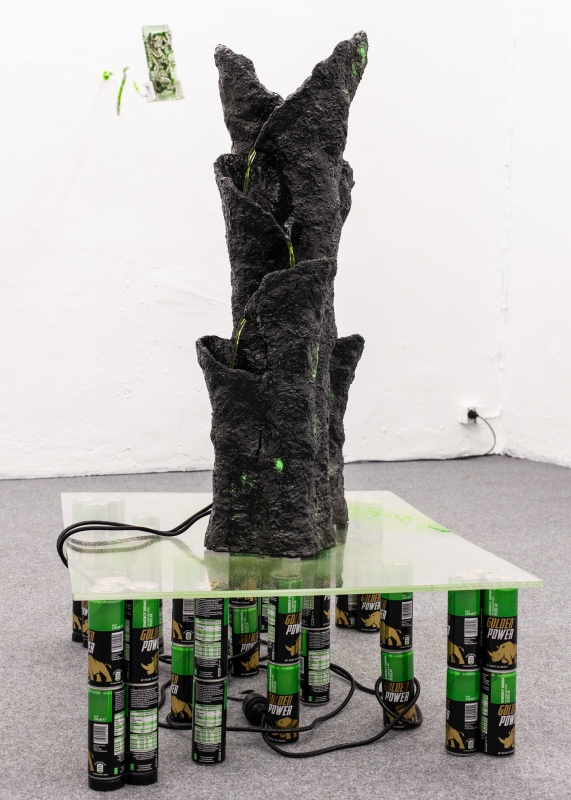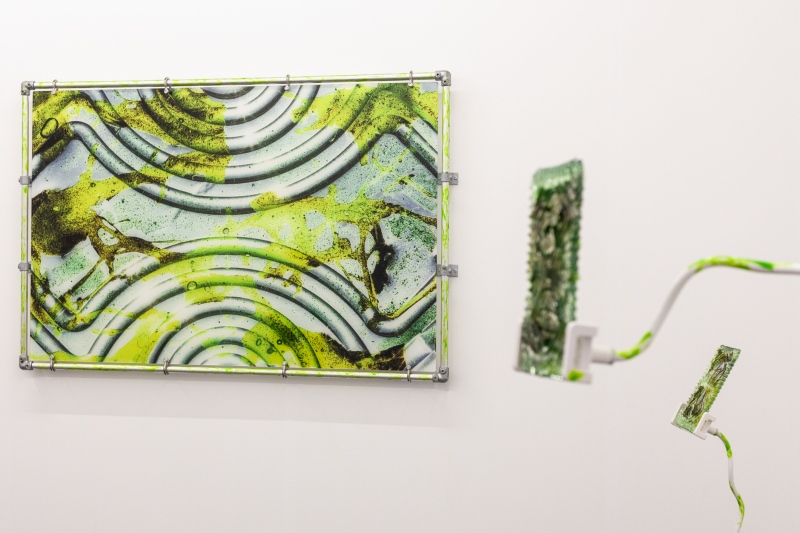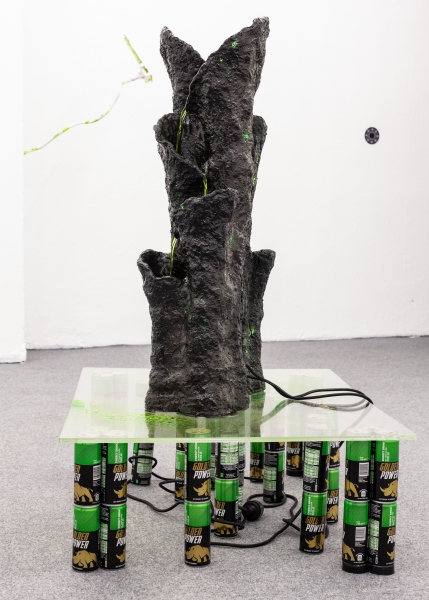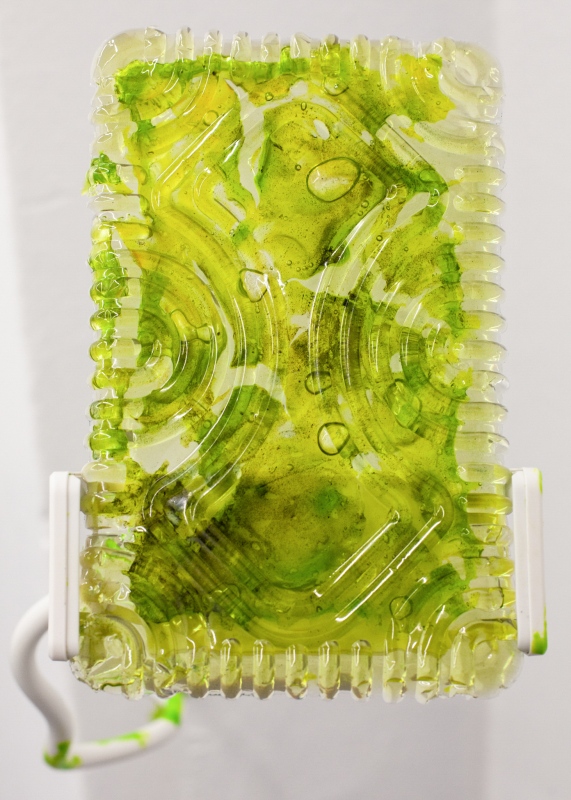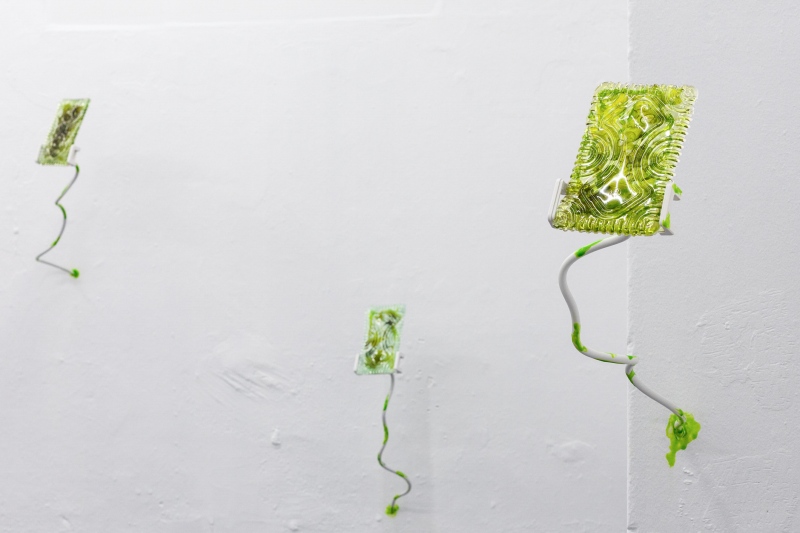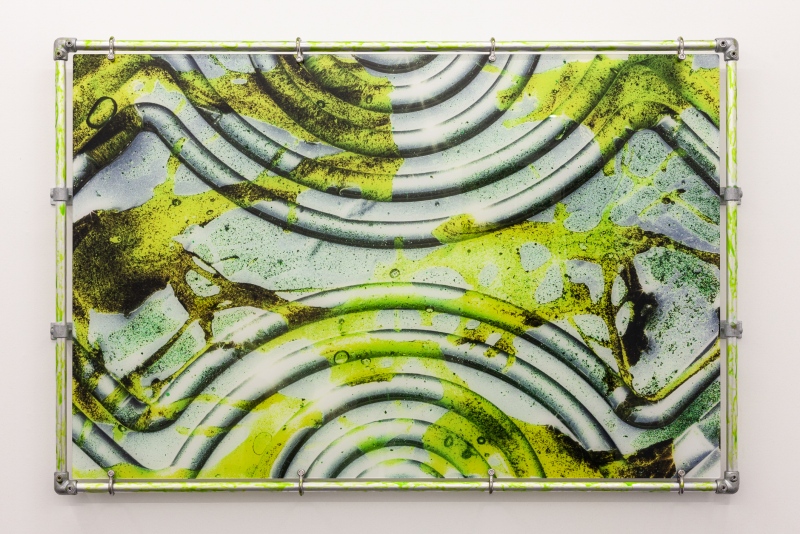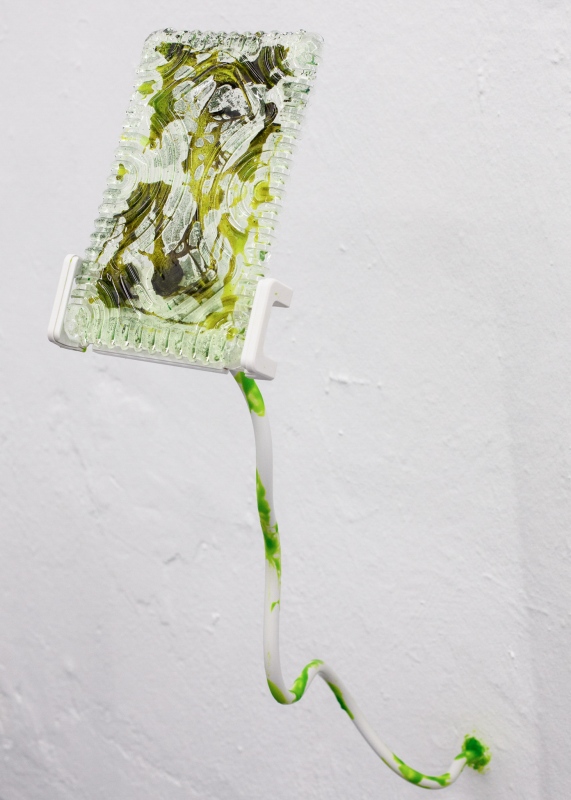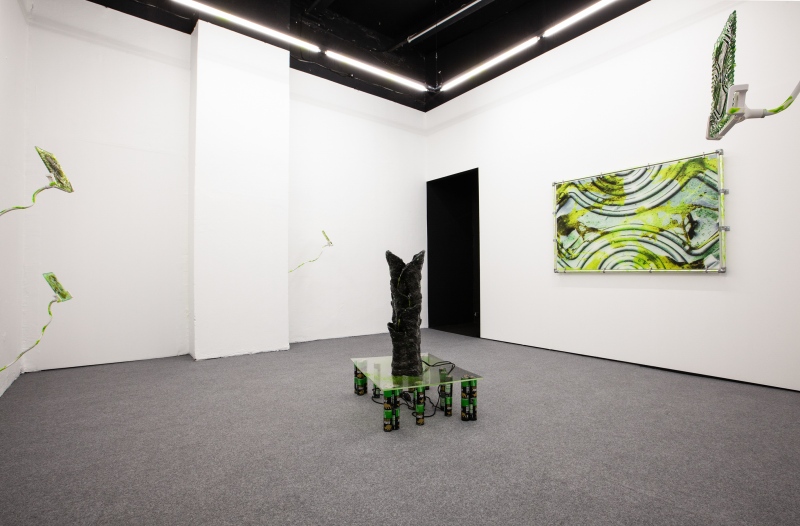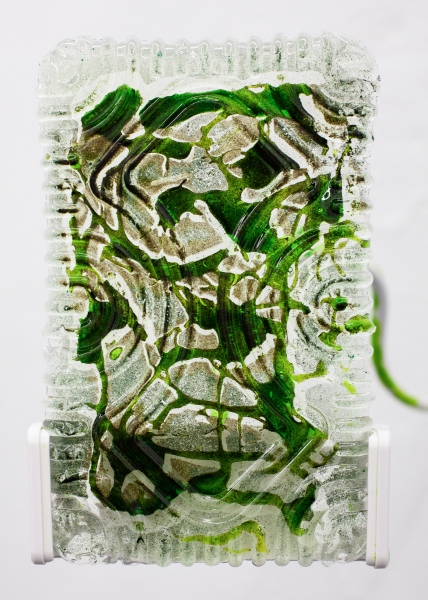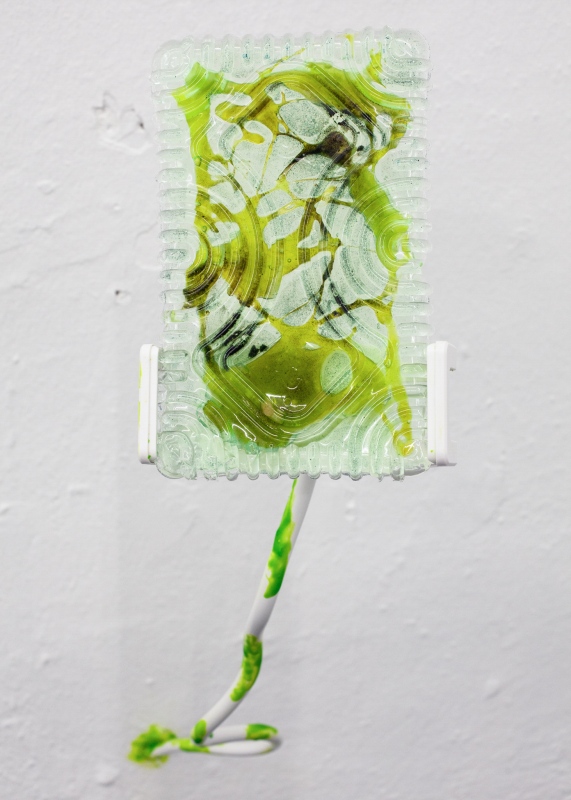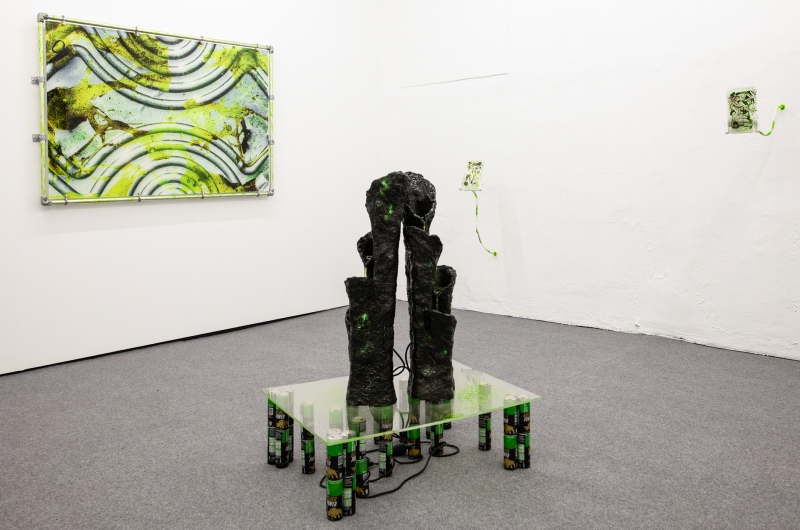Powered By is a new work focused on excess in relation to trends in renewable energy. The work also reflects on cyanobacteria’s metaphorical value and physical presence within the concept of greenness. Õllek creates a speculative “green” power station that explores the notion of energy transition powered by cyanobacteria, algal blooms, solar energy, energy drinks, fertilisers and toxic green matter. Artificiality and the inherent toxicity of the colour green is correlated to the harmful blue-green algal blooms that appear as a side effect of environmental pollution and climate change.
––
New commissioned work for the group show "Tiger in Space", curated by Vanina Saracino, Lea Vene and Marten Esko at Contemporary Art Museum of Estonia (EKKM), 11.09–01.11.2020. The exhibition publication can be found here.
__
3.5 billion years ago, being present then and now,
the oldest known fossils are still living among us.
the catalyst and the changer of Earth’s life forms,
creating the oxygenic atmosphere we know and breathe today;
say hello to cyanobacteria.
at a broad range of wavelengths and light intensities,
this oxygenic photosynthesis organism performs solar energy conversion,
of water and co2 to o2 and sugar.
scientists say they might be the source for the new bio-solar cell.
printed live cyanobacteria, no silicon panels needed.
press print.
print renewable energy.
*
cyanobacteria, more often known as blue-green algae, can rapidly accumulate and change its presence in the aquatic. from being an important part of global ecology and the oxygen cycle, they can become dreadful and create dead zones. with the increase in water temperature and under high concentration nutrients, the runoffs from agriculture, the stir of phosphorus, nitrogen and weak water management, they can reproduce exponentially, forming blooms.
*
blooming blue-green algal blooms.
the greenish surface taking over the water and air,
producing cyanotoxin, some of the most powerful natural poisons known.
the excess energy creating the toxic cocktail of green.
*
“green” is related both to the representation of nature/natural and to techno-scientific. paradoxically, the colour green can never be manufactured as “green”. despite the availability of plant-based materials, the pigments used to stabilise and technically fix green are always composed of some toxic substances. inorganic pigment Green 50 consists of cobalt, titanium, nickel and zinc oxide, the same resource metals that are extracted for the current “green” technologies.
greening “green”.
POWERED BY (2020)
Installation. Bioplastic, 110×170 cm aluminium frame, UV print on plexiglass, spirulina powder, emerald green pigment, clay, fountain, water, energy drink cans, bioplastic-epoxy panels, adjustable holders.
Exhibited at Tiger in Space gorup show, curated by Vanina Saracino, Lea Vene and Marten Esko at EKKM, Tallinn.
